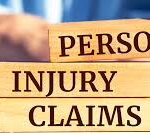Product liability is a critical aspect of consumer protection law, ensuring that manufacturers, distributors, and retailers are held accountable for the safety of the products they offer to the public. Whether you’re a consumer who has been injured by a defective product or a manufacturer concerned about potential liability, understanding the core principles of product liability is essential. This article delves into the key elements of product liability, the different types of claims, and how both consumers and manufacturers can protect themselves.
What is Product Liability?
Product liability refers to the legal responsibility of a manufacturer, distributor, or retailer for injuries caused by a defective or dangerous product. This liability can stem from various types of defects, such as design defects, manufacturing defects, or inadequate warnings. If a product is found to be defective and causes harm, the responsible parties may be required to compensate the victim for medical expenses, lost wages, pain and suffering, and other damages.
For consumers, understanding product liability means knowing their rights in the event of an injury. If a product is defective and causes harm, the injured party can file a claim to seek compensation. On the other hand, manufacturers and businesses need to be aware of their legal obligations to ensure the safety of the products they produce and sell, as failing to meet these standards can lead to costly legal consequences.
Types of Product Defects
In product liability cases, the nature of the defect plays a critical role in determining responsibility. The three main types of product defects that can lead to liability are:
- Design Defects
A design defect occurs when a product is inherently dangerous due to its design, even before it is manufactured. For example, a car model with a defective braking system or a children’s toy with choking hazards may be considered dangerous by design. Manufacturers are liable for design defects if they fail to meet safety standards or provide adequate warnings about potential risks. - Manufacturing Defects
A manufacturing defect arises when a product is made in a way that deviates from its intended design, making it dangerous. For instance, a batch of shoes that is manufactured with faulty stitching that causes blisters, or a food product contaminated with bacteria during production, can lead to significant injury. Manufacturing defects typically involve isolated instances of poor quality control during production. - Marketing Defects (Failure to Warn)
Marketing defects occur when a manufacturer fails to provide adequate instructions, warnings, or safety labels. These can include not warning consumers about potential risks of using a product or omitting important safety precautions. For example, a pharmaceutical company that fails to disclose the side effects of a drug may be held liable for any injuries caused by the drug.
Product Liability and the Legal Process
Consumers who are injured by defective products often seek compensation through a product liability lawsuit. To win a product liability claim, the injured party must prove the following elements:
The Product Was Defective: The plaintiff must demonstrate that the product had a defect that made it unreasonably dangerous.
The Defect Caused the Injury: The plaintiff must prove that the defect in the product directly led to the injury. This can involve medical records, expert testimony, or other evidence showing a clear link between the defect and the harm.
The Product Was Used as Intended: The product must have been used as it was intended or in a foreseeable manner when the injury occurred.
For manufacturers, understanding these requirements is essential to minimizing the risk of lawsuits. Companies can reduce liability by ensuring rigorous product testing, conducting safety assessments, and providing clear product warnings.
How Manufacturers Can Protect Themselves
Manufacturers can take several steps to reduce the risk of product liability claims and protect their businesses from costly lawsuits:
Product Testing and Quality Control: Implementing thorough testing procedures during the design and production stages can identify potential defects before products reach consumers.
Clear Labeling and Instructions: Providing clear warnings, safety labels, and instructions on how to use the product safely is essential. This helps protect the manufacturer from liability in cases of misuse or accidents.
Insurance Coverage: Manufacturers can purchase product liability insurance to protect their business in case of legal claims. Insurance coverage can help cover the cost of legal fees, settlements, or damages resulting from product defects.
Compliance with Safety Standards: Adhering to industry-specific safety standards, regulations, and guidelines is a proactive approach to preventing defects and ensuring product safety.
Conclusion
Product liability is a crucial aspect of consumer law that ensures manufacturers are held accountable for defective products. By understanding the different types of product defects and the legal responsibilities involved, both consumers and manufacturers can navigate the complexities of product liability. Consumers should be aware of their rights to seek compensation if they are injured by a defective product, while manufacturers must take proactive steps to minimize risks and ensure product safety. By doing so, both parties can protect their interests and promote a safer marketplace for everyone.

